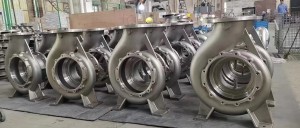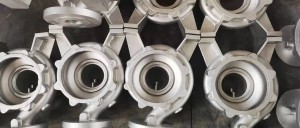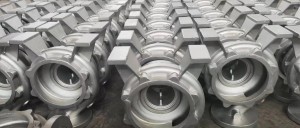Casting is a common metal processing method, through the injection of molten metal into the mold, after cooling and solidification to form the required parts or products. The working principle of castings involves several steps, including processes such as melting, pouring, cooling and demoulding. This article will introduce in detail the working principle of castings and its importance in the manufacturing industry.
First, smelting: the melting of metal and the purification of castings is to melt the required metal material. A high-temperature furnace is usually used to heat a metal above its melting point, making it a liquid state. During the smelting process, the metal also needs to be purified to remove impurities and air bubbles and ensure the quality of the final product.
Second, pouring: the melted metal is injected into the mold after the melting is completed, the melted metal is poured into the pre-made mold. Molds can be customized according to the shape and size of the desired product. When pouring, attention needs to be paid to controlling the temperature and flow speed of the metal to ensure that the metal can fully fill the cavity of the mold and avoid the formation of pores or defects.
Cooling: Metal solidification and crystal growth Once the metal is injected into the mold, it will quickly cool and solidify. The cooling rate is very important for the quality of the casting. If the cooling is too fast, it may lead to a concentration of stress inside the metal, which can cause cracks or deformation. On the contrary, if the cooling is too slow, it may lead to excessive crystal growth, affecting the strength and density of the casting.
When the metal is completely solidified, the mold can be opened and the casting can be removed from it. The demoulding process requires care to avoid damaging the casting or mold. Sometimes, subsequent finishing and machining may be required to achieve the desired precision and surface quality.
The importance of the working principle of castings cannot be underestimated. Casting technology is widely used in manufacturing, covering everything from automotive parts to aerospace devices. Compared with other processing methods, castings have the following advantages:
1. Complex shape: castings can manufacture complex shape parts, such as internal cavities, threads and convex and convex surfaces, to meet various engineering needs.
2. Material selection: castings can use a variety of metal materials, including iron, aluminum, copper, magnesium, etc., as well as various alloys, providing a greater range of material selection.
3. Economy: castings can be mass produced to improve production efficiency and reduce costs. At the same time, the mold can be reused to further reduce manufacturing costs.
4. High precision: castings can achieve high precision and surface quality requirements, reduce subsequent processing processes, and improve product quality.
The working principle of casting is a precise art that involves multiple steps and techniques. By mastering the working principle of castings, the manufacturing industry can produce various parts and products with complex shapes and excellent performance, and promote industrial development and technological progress.
Post time: Mar-12-2024



